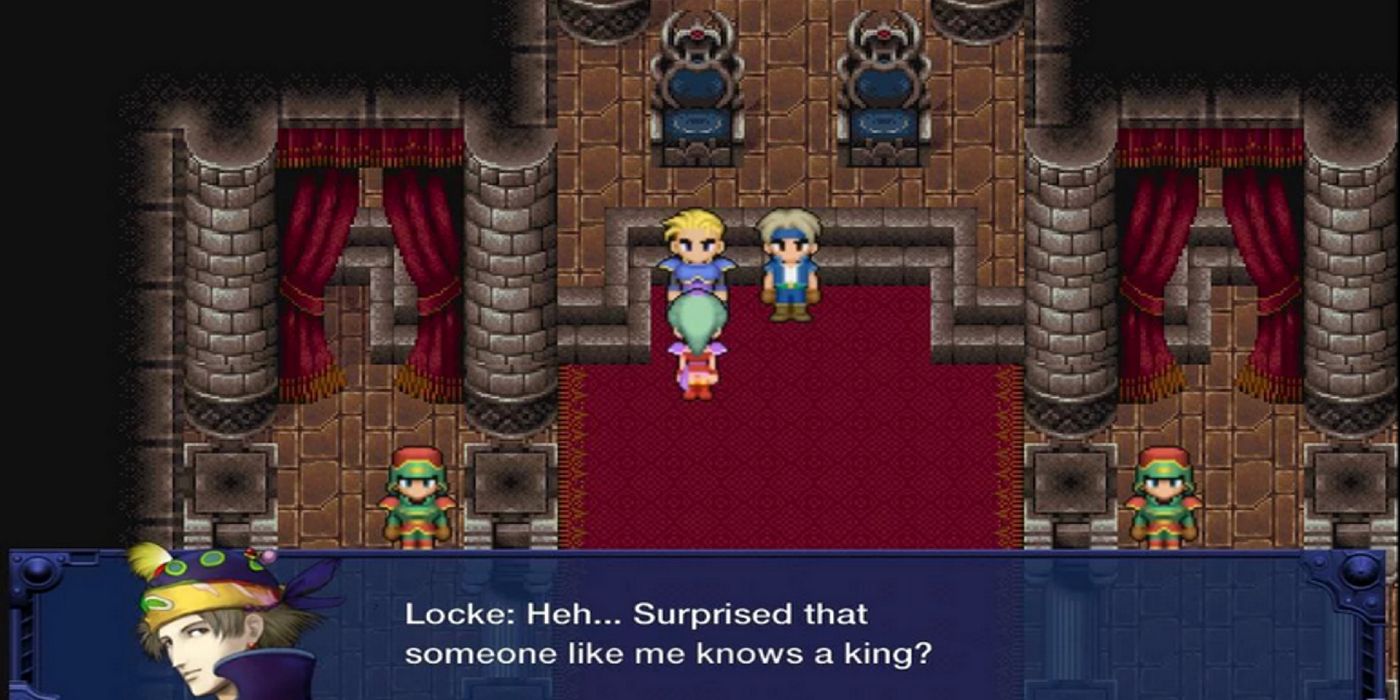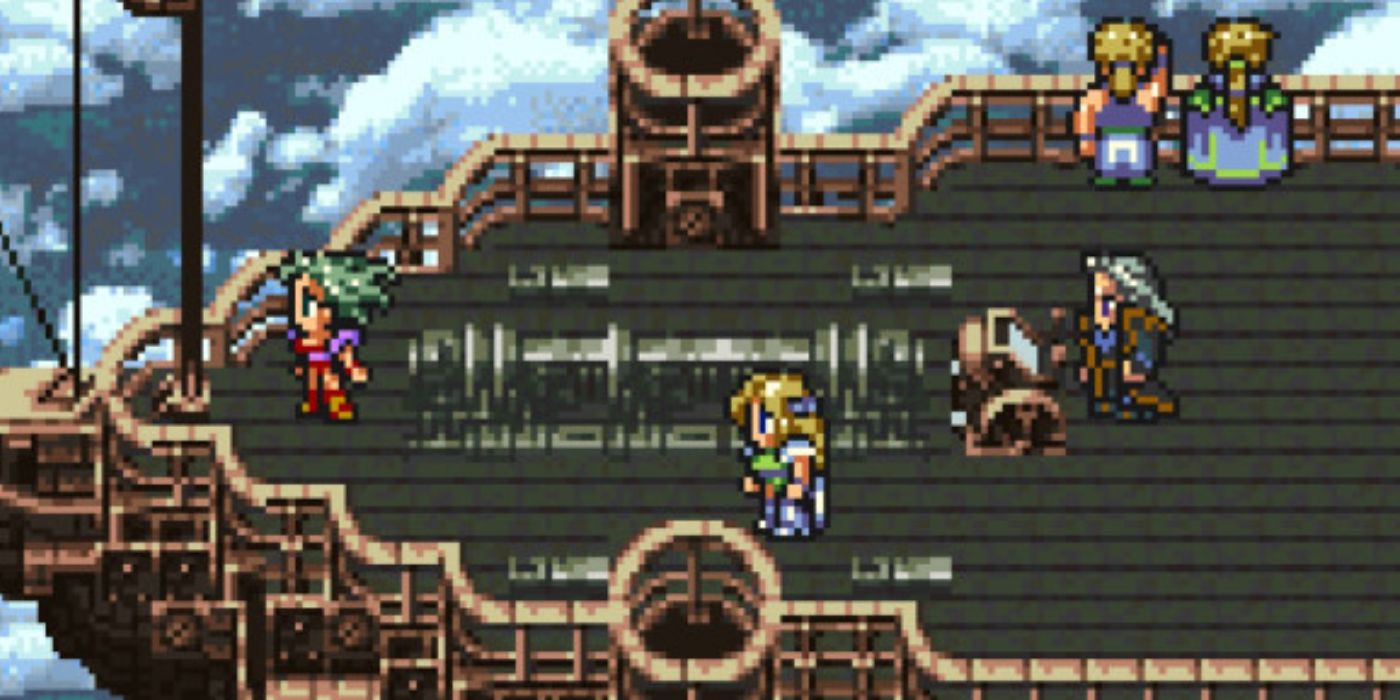FF6: What Version Of Final Fantasy 6 Is Best | Screen Rant

The Final Fantasy franchise stands at the top of Square Enix's library as its longest-running and most well-known franchise. Spanning 16 games within the mainline series, the Final Fantasy series has also spawned spin-offs and numerous other media efforts, from movies to animations and a trading card game. Most of the games prior to Final Fantasy 13 have seen rereleases across multiple platforms that make the older titles accessible for future generations. While most of these releases have what fans consider a definitive version, Final Fantasy 6 sticks out for lacking such a release, making it difficult to determine which version of FF6 is best.
Final Fantasy 6 was originally released on the SNES in April 1994 as the final Nintendo FF release before the franchise moved to the PlayStation with Final Fantasy 7. The game saw rereleases on many platforms, including the PlayStation in 1999, the Game Boy Advance in 2006, and even a mobile version in 2014. The latest FF6 release, a PC version based on the mobile version, came out in 2015.
Each version of the title comes with its own benefits. The original, heralded as one of the SNES' best games, remains a nostalgic favorite, with the SNES Classic bringing this version back into the spotlight in 2017. Later versions would make their own marks with graphical and audio changes, along with new content not present in the original game. As each version of Final Fantasy 6 offers something different, there is no true definitive version of the game. Some versions stand out, however, as inferior ways to play FF6.

The PlayStation version of FF6 is an upgraded port released as part of the Final Fantasy Anthology in 1999. The port came with several new features, such as full-motion video cutscenes, a bestiary, and a gallery, among other touches. However, the tradeoff for the new features lies in the game's persistent load times on PlayStation. These are usually short, but since they occur in every menu and encounter in the game, it begins to add up and drag down what was a smooth experience in the original SNES version of FF6.
In 2014, Final Fantasy 6 made its way into the mobile market with a release on iOS and Android devices. This version of the game retains some of the changes and bug fixes of previous releases, but the graphical style of its SNES, GBA, and PS1 versions was redone, eschewing FF6's signature design for a less pixelated yet blurrier look. The UI also received a redesign to accommodate the change in platform, leaving longtime fans of the game dissatisfied.
In the time between the various releases of FF6, tools started becoming available for players that weren't always readily accessible. Mods and ROM hack to improve games became a common part of gaming over the years. As fans continued to look for a definitive version of FF6, the modding and ROM hacking scenes took matters into their own hands.

While the SNES version of FF6 maintains a respectable place as the original release of the enduring title, ROM hacks can improve classic games to new levels. Two ROM hacks stand out for the SNES version: The Relocalization Project and the Ted Woolsey Uncensored Edition. Both keep the game effectively the same, while restoring some of the sprites in the U.S. release to their Japanese originals. The main contribution both ROM hacks bring, however, is retranslating and fine-tuning FF6's script.
The Relocalization Project ROM hack uses the script of Final Fantasy 6's Game Boy Advance version as a base, retranslating the game from start to finish and fixing numerous bugs and issues in the process. However, for fans preferring something more akin to the original, the Ted Woolsey Uncensored Edition essentially uses the original SNES version's script and updates it for accuracy and tone, maintaining the intent of the SNES game. While also fixing bugs, this ROM hack cleans up the dialogue boxes and adds clearer descriptions of in-game items and magic.
The GBA version of Final Fantasy 6 is often considered an upgrade, due to its additional content, but the limitations of the GBA hardware - as well as a few scenes cut from the original Final Fantasy 6 - hold this version back. The Sound Restoration Hack fixes the game's audio issues, and The Color Restoration Patch restores its visuals to match the original sprite work, as the GBA version's graphics received a brightening effect to compensate for the handheld's lack of a backlight. While there is no way to restore the lost scenes, both GBA ROM hacks create another great way to experience Final Fantasy 6.
The Final Fantasy 6 PC release was met with criticism for being based entirely on the mobile version, right down to the graphics and UI design changes. A group of modders calling themselves "Dream Team 2.0" (in reference to Square's original "Dream Team" in the '90s) took it upon themselves to create the A World Reborn mod. This mod gives players the option to use new, completely redrawn sprites and backgrounds or the original SNES graphics. The mod also replaces the in-game music with orchestral versions of the original soundtrack to create an updated soundscape. With the content from the GBA version and the wealth of options from A World Reborn, the PC version may now hold its own as one of the best ways to play FF6.
Each version of FF6 has its own pros and cons, but mods and user ingenuity have been able to bring the most out of the game. With no definitive version of the title, players created their own definitive builds and provided other fans with plenty of options, depending on what they are looking for from the experience. Perhaps it is time for Square Enix to consider a Final Fantasy 6 remake. But until then, the best versions of the ageless classic exist in the hands of the players restoring the worn text of the original tale.
from ScreenRant - Feed

